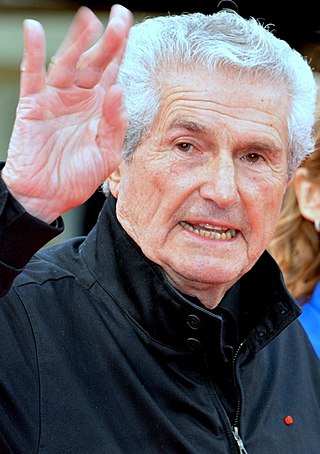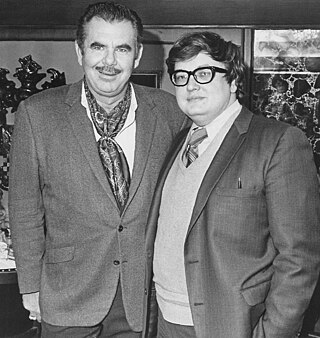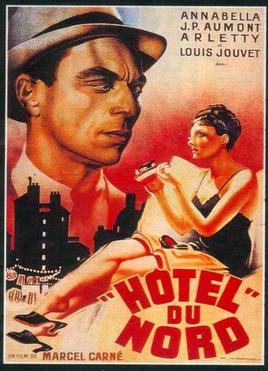Related Research Articles

Chris Marker was a French writer, photographer, documentary film director, multimedia artist and film essayist. His best known films are La Jetée (1962), A Grin Without a Cat (1977) and Sans Soleil (1983). Marker is usually associated with the Left Bank subset of the French New Wave that occurred in the late 1950s and 1960s, and included such other filmmakers as Alain Resnais, Agnès Varda and Jacques Demy.

Amélie is a 2001 romantic comedy film directed by Jean-Pierre Jeunet. Written by Jeunet with Guillaume Laurant, the film is a whimsical depiction of contemporary Parisian life, set in Montmartre. It tells the story of a shy, introverted and quirky waitress, played by Audrey Tautou, who decides to change the lives of those around her for the better while dealing with her own isolation. The film features an ensemble cast of supporting roles, including Mathieu Kassovitz, Rufus, Lorella Cravotta, Serge Merlin, Jamel Debbouze, Claire Maurier, Clotilde Mollet, Isabelle Nanty, Dominique Pinon, Artus de Penguern, Yolande Moreau, Urbain Cancelier, and Maurice Bénichou.

Juliette Binoche is a French actress. She has appeared in more than 60 films, particularly in French and English languages, and has been the recipient of numerous accolades, including an Academy Award, a British Academy Film Award and a César Award.

Léonie Marie Julie Bathiat, known professionally as Arletty, was a French actress, singer, and fashion model. As an actress she is particularly known for classics directed by Marcel Carné, including Hotel du Nord (1938), Le jour se lève (1939) and Children of Paradise (1945). She was found guilty of treason for an affair with a German officer during World War II.

Claude Barruck Joseph Lelouch is a French film director, writer, cinematographer, actor and producer. Lelouch grew up in an Algerian Jewish family. He emerged as a prominent director in the 1960s. Lelouch gained critical acclaim for his 1966 romantic melodrama film A Man and A Woman. At the 39th Academy Awards in 1967, A Man and a Woman won Best Original Screenplay and Best Foreign Language Film. Lelouch was also nominated for Best Director. While his films have gained him international recognition since the 1960s, Lelouch's methods and style of film are known for attracting criticism.

Fashion photography is a genre of photography that portrays clothing and other fashion items. This sometimes includes haute couture garments. It typically consists of a fashion photographer taking pictures of a dressed model in a photographic studio or an outside setting. It originated from the clothing and fashion industries, and while some fashion photography has been elevated as art, it is still primarily used commercially for clothing, perfumes and beauty products.

Fat Girl is a 2001 drama film written and directed by Catherine Breillat, and starring Anaïs Reboux and Roxane Mesquida. It was released in certain English-speaking countries under the alternative titles For My Sister and Story of a Whale. The film's plot follows two young sisters as they deal with coming-of-age, sibling rivalry, and desire while on vacation with their family.

The most characteristic North American fashion trend from the 1930s to 1945 was attention at the shoulder, with butterfly sleeves and banjo sleeves, and exaggerated shoulder pads for both men and women by the 1940s. The period also saw the first widespread use of man-made fibers, especially rayon for dresses and viscose for linings and lingerie, and synthetic nylon stockings. The zipper became widely used. These essentially U.S. developments were echoed, in varying degrees, in Britain and Europe. Suntans became fashionable in the early 1930s, along with travel to the resorts along the Mediterranean, in the Bahamas, and on the east coast of Florida where one can acquire a tan, leading to new categories of clothes: white dinner jackets for men and beach pajamas, halter tops, and bare midriffs for women.
Nino Frank was an Italian-born French film critic and writer who was most active in the 1930s and 1940s. Frank is best known for being the first film critic to use the term "film noir" to refer to 1940s US crime drama films such as The Maltese Falcon.

Léonce Joseph Perret was a prolific and innovative French film actor, director and producer. He also worked as a stage actor and director. Often described as avant-garde for his unorthodox directing methods, Léonce Perret introduced innovative camera, lighting and film scoring techniques to French cinema.

Carnival in Flanders is a 1935 French historical romantic comedy film directed by Jacques Feyder, and created during the poetic realism period in 1930s France. It is also widely known under its original title in French, La Kermesse héroïque. A German-language version of the film was made simultaneously and was released under the title Die klugen Frauen, featuring Ernst Schiffner in one of his early film roles.

Film criticism is the analysis and evaluation of films and the film medium. In general, film criticism can be divided into two categories: journalistic criticism that appears regularly in newspapers, magazines and other popular mass-media outlets; and academic criticism by film scholars who are informed by film theory and are published in academic journals. Academic film criticism rarely takes the form of a review; instead it is more likely to analyse the film and its place in the history of its genre or in the whole of film history.
Henri Jules Louis Jeanson was a French writer and journalist. He was a "satrap" in the "College of 'Pataphysics".

Hôtel du Nord is a 1938 French drama film directed by Marcel Carné that stars Arletty, Louis Jouvet, Annabella, and Jean-Pierre Aumont. It tells the story of two couples in Paris, one being a prostitute and her pimp and the other two young lovers without regular jobs. A work of poetic realism, cinematography, music, and dialogue add a poetic dimension to the lives and surroundings of working-class people.

Laurent Gervereau is a French artist, novelist, philosopher and filmmaker. The founder of the discipline of Visual History, he has devoted his professional life to the world of images, as well as to the direction of cultural and international institutions.

Epoca was anillustrated weekly current events magazine published between 1950 and 1997 in Milan, Italy. It was one of the leading magazines during its run.

Nick Rees-Roberts is a British-born author and French academic. He is Professor of Media, Culture and Communication at the Sorbonne Nouvelle University Paris, France.
Ciné-Mondial was a weekly film magazine which was published in France in the period between 1941 and 1944 when Nazi Germany occupied the country. It is known for being the sole publication on movies in France during that period.
Cinémonde was a weekly popular film magazine which existed between 1928 and 1971 with six-year interruption due to its ban during the Nazi occupation of France. It was one of the best-selling magazines in its category particularly in the 1950s.

Nuestro Cinema was a film magazine which was published in Spain between 1932 and 1936 with a one-year interruption. Its subtitle was Cuadernos Internacionales de Valorizacion Cinematografica. It was one of the earliest Spanish publications in its category and was the first Communist film magazine in Spain.
References
- ↑ Leila Wimmer (March 2014). "Modernity, femininity and Hollywood fashions: Women's cinephilia in 1930s French fan magazines". Film Fashion & Consumption. 3 (1): 61–76. doi:10.1386/ffc.3.1.61_1.
- 1 2 3 4 5 6 7 Ron Magliozzi (24 June 2013). "Pour Vous: Looking at a Classic Cinema Fanzine from France". Museum of Modern Art . Retrieved 5 January 2023.
- 1 2 3 4 Eric Smoodin (Spring 2011). "Going to the Movies in Paris, around 1933: Film Culture, National Cinema, and Historical Method". The Moving Image: The Journal of the Association of Moving Image Archivists. 11 (1): 25–55. doi:10.5749/movingimage.11.1.0025.
- 1 2 3 4 "Nino Frank: from Dada to Film Noir". rememberninofrank.org. Retrieved 5 January 2023.
- ↑ Myriam Juan (2020). "Looking at Movie Fans: On Pictures Published in French Film Magazines of the Interwar Years". In Daniel Biltereyst; Lies Van de Vijver (eds.). Mapping Movie Magazines. Global Cinema. Global Cinema. Cham: Palgrave Macmillan. p. 208. doi:10.1007/978-3-030-33277-8_10. ISBN 978-3-030-33277-8. S2CID 216419888.
- ↑ Ellen Pullar (2012). "'A star who is not like the others': Arletty's publicity persona during the 1930s". Studies in French Cinema. 12 (1): 7–19. doi:10.1386/sfc.12.1.7_1. S2CID 191492706.